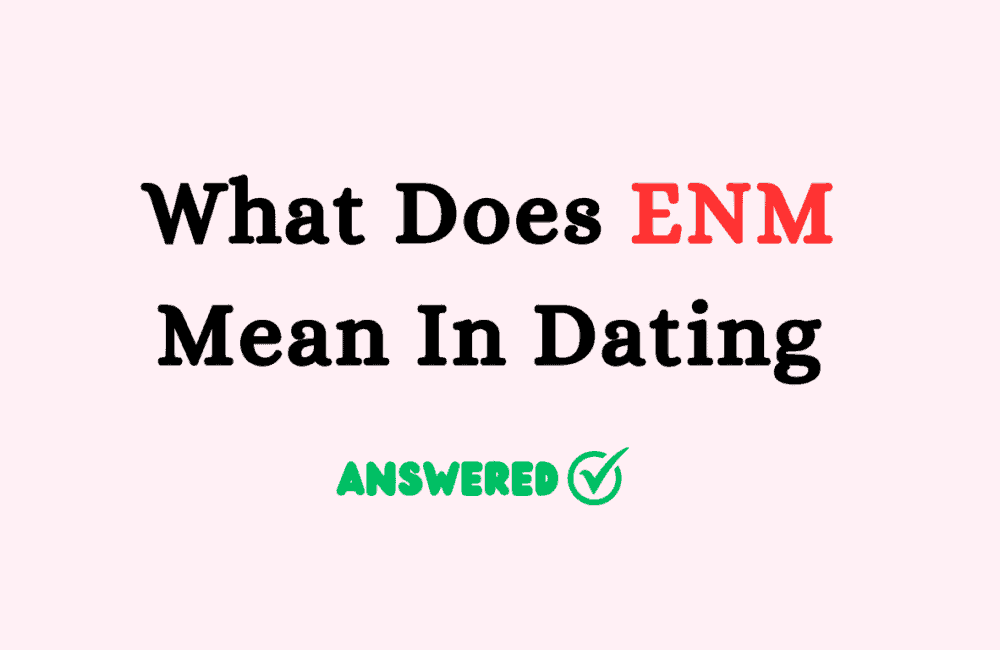Have you ever been on a date or If you’re a user of the dating app, you may have come across the acronym ENM at some point.
But what does ENM mean in Dating? Is it a secret code, a personal ad, or something else entirely?
In this article, we will discuss the meaning of ENM in Dating and explore the world of ethical non-monogamy (ENM) along with different types of ENM relationships.
What Does ENM Mean In Dating?
in Dating, “ENM” refer to “ethical non-monogamy,” which is the practice of participating in romantic relationships that are not completely exclusive between two people.
It is possible that some users on the dating app may use this abbreviation in their profiles or messages to indicate that they are interested in or open to non-monogamous relationships.
It is important to remember that not all users in Dating will be open to or interested in non-monogamous relationships, and it is important to respect other people’s boundaries and preferences when using the dating app.
If you are interested in pursuing a non-monogamous relationship, it is important to be open and honest with your potential partners and to carefully consider the risks and challenges that can arise in these types of relationships.
Types Of Ethical Non-Monogamy (ENM) In Dating?
There are many different types of ENM relationships, each with its own unique characteristics and dynamics.
Below are some common types of ENM relationships:
1. Polygamy
Polygamy refers to “being married to multiple partners.”
In a polygamy relationship, one person is married to multiple partners at the same time, and all partners are aware of and consent to this arrangement.
Polygamy is more common in certain cultures and religions, and is legal in some countries but not in others.
2. Open Relationships
in Dating, In an open relationship, partners are allowed to have romantic or sexual relationships with other people outside of their primary partnership.
Open relationships may involve one or both partners being involved with other people, and these relationships may or may not be exclusively sexual.
3. Swinging
Swinging refers to “having sex with another couple and/or ‘swapping partners.'”
In a swinging relationship, couples may engage in sexual activity with other couples, either at the same time or separately.
Swinging is often practiced by couples who are looking to spice up their sex lives and explore new experiences.
4. Monogamish Relationships
A monogamish relationship is one that is “for the most part, monogamous, but allows for little acts of sexual indiscretion (with the partner’s knowledge).”
In a monogamish relationship, partners may have occasional sexual encounters outside of their primary relationship, but these encounters are typically limited in scope and are agreed upon by both partners.
5. Polyamorous Relationships
In a polyamorous relationship, a person has “intimate relationships with more than one person at the same time.”
Polyamorous relationships can take many different forms, and may involve multiple romantic or sexual partners, or a mix of both.
Polyamorous relationships often involve a high level of communication and negotiation to ensure that all partners’ needs and boundaries are respected.
6. Polyfidelitous Relationships
A polyfidelitous relationship is one in which “a group of people are equal partners in the relationship, and no one has sex with or dates people outside the group.”
Polyfidelitous relationships are sometimes referred to as “closed” polyamorous relationships, as they involve a smaller group of committed partners who do not engage in relationships with people outside of the group.
7. Relationship Anarchy
Relationship anarchy is an approach to relationships that is “non-hierarchical” and involves “no set rules or expectations other than the ones that involved partners agree upon.”
Relationship anarchy can be practiced within any type of relationship, including monogamous, non-monogamous, and polyamorous relationships.
It involves a focus on personal autonomy and the belief that individuals should be free to create and maintain relationships on their own terms.

